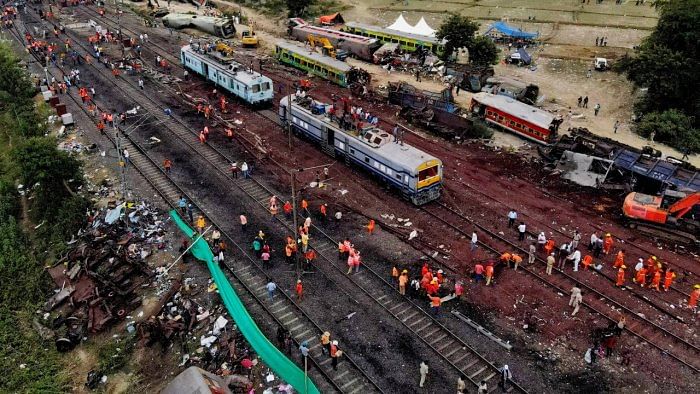
After the devastating train crash tragedy in Odisha, in which over 270 lives were compromised and more than a thousand people were injured, the Union Railway Minister declared that the reason behind the crash was the electric point machine, a vital device for railway signalling, and electronic interlocking.
“This accident occurred due to changes to the electronic interlocking system. "The setting of the point machine was changed. How and why it was done will be revealed in the probe report,” Ashwini Vaishnaw said.
What is an electric point machine?
An electric point machine is a vital device for railway signalling for quick operation and locking of point switches and plays an important role in the safe running of trains. Failure of these machines severely affects train movement.
The preliminary probe report, a copy of which is with PTI, said the signal was given and taken off for the up main line for train number 12841 (Coromandel Express). The train entered the loop line, dashed with the goods train and derailed. In the meantime, train number 12864 (Bengaluru-Howrah Superfast Express) passed through the down main line and two of its coaches derailed and capsized, the report said.
Also Read | Odisha train accident: Timeline of events
What is a loop line?
A loop line is created in order to ease operations and accommodate more trains. In this case, Bahanagar was the loop line.
"Though the goods train was on the loop line of the railway station as per the signal panel kept in the station manager's office, the last few bogies of it may still have been physically present on the main line when Coromandel Express came rushing at 127 km per hour," a former railway official told The Hindustan Times.
So what is this electric interlocking system that may have been responsible for one of the biggest train tragedies since the 1990s?
Interlocking is a system meant to ensure that conflicting signals are not sent, resulting in more than one train ending up on the same section of the track around the same time, risking a collision.
The interlocking system primarily has three main components, as per a report published in The India Today.
Signals: These work similar to our usual traffic signals that are meant to indicate the status of the tract ahead.
Track: These electrical circuits indicate the occupancy of the track by detecting the presence of trains.
Points: This component allows the trains to change their tracks.
Since in the Odisha triple train crash, the initial conclusion was that one of the passenger trains entered onto the wrong track, it is important to understand how the above-mentioned component of ‘points’ works.
Also known as switch rails, points are movable rails that guide the wheel of a train towards a straight track or a diverging one. Once the direction of the train has been ascertained, the points get locked in that position. When this happens, the train cannot budge till it has passed.
Who gives the signals and operates the interlocking system?
As per the IE report, the interlocking system is monitored by personnel from the signalling and telecommunication department of the Railways. These people monitor the tracks, send out signals and are responsible for ensuring safe movement.
Most of the interlocking systems in the Indian Railways are electronically driven these days, wherein there is a single integrated mechanism in a signal cabin that displays the track layout indicating the sections that are occupied, free or set for any activity.
Electronic interlocking systems use e-control systems and computers in order to regulate train movement, according to a report in the NDTV. The report further added that the chances that the machine would flaw were only 0.1 per cent.
What do the railway officials have to say?
Given that driver-related error has been ruled out, speculations are on a faulty interlocking system. "There is probability of some kind of signalling interference...whether it was manual or incidental, wear and tear related, maintenance failure or weather related will come out in the CRS inquiry,” Jaya Verma Sinha, Member of Operations and Business Development, Railway Board, told PTI. Explaining how the point machine and the interlocking system function, she said that the system is "error proof" and "fail safe" but did not rule out the possibility of outside intervention.
"It is called a fail-safe system, so it means that even if it fails, all the signals will turn red and all train operations will stop. Now, as the minister said there was a problem with the signalling system. It could be that someone has done some digging without seeing the cables. Running of any machine is prone to failures," Sinha said.
In a recent development into the Balasore train accident, the CBI is set to take over the investigation.
(With agency inputs)